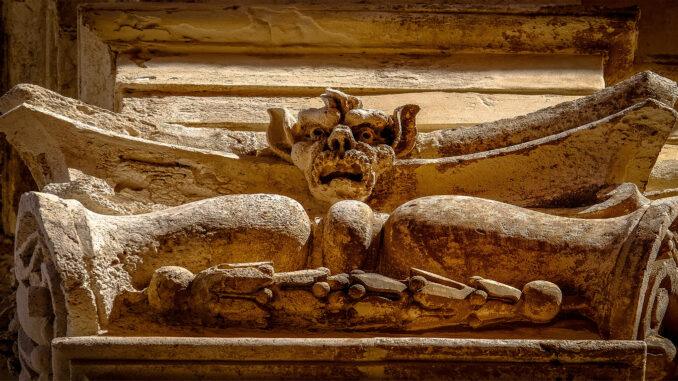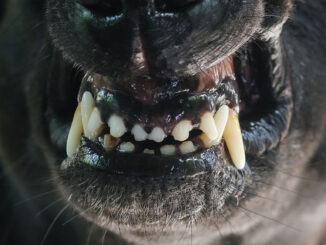
Whenever I’m a guest on a radio show, the dreaded D word eventually pops up. And, by D word, I mean Demon. This is an issue that often gets my big old fat mouth in trouble, because my answer tends to get misunderstood. You see, I’m a psychical researcher which means my focus is on psychic ability and survival of consciousness after death. It’s not that I don’t think demons could exist, it’s just that in almost thirty years as an investigator, I’ve never come across one. I’m just being honest here.
With that being said, I have noticed that belief in demons have made a major comeback in the last 2 decades. It seems that every paranormal “reality” tv hero is on the hunt for debased spirits every week. But what they don’t cover in these shows is the history or demon lore of the world. These stories had to come from somewhere and they are more ancient than you could possibly imagine.
Mesopotamian Demons
The first real mention of demonic or inhuman entities comes to us from the world’s first known civilization, Mesopotamia. The Mesopotamians seemed to pretty much have a demon for everything that ailed them. Petty annoyances and disease were blamed on demons. If it was something bad, these ancient people had a demon for it.
A group of demons that were known to bring storms and disease were known as the Lilitu. The Lilitu, which were believed to live in caves in desolate areas, held mankind in the greatest disdain because they were favored by the gods. War, famine, disease you name it, chances were the Lilitu were behind it. The Lilitu were diabolical in the extreme and may be the prototype for our western concept of demons.
Oddly enough, Lilitu had gender as well. A male Lilitu, known as an Alu, roamed the streets in a monstrous half man/half dog form. Alu, would sneak into houses at night and stir up all kinds of trouble. Some think this demon was the earliest reference to werewolves.
The Gallu was something else entirely. Gallu were female demons that would rape and molest men as they slept and steal their vitality. Gallu also had a taste for human flesh, particularly the flesh of children. Festivals were held to appease these beings.
It’s believed that the ancient Hebrews took their folklore concerning a demonic creature known as Lilith from the Mesopotamian Lilitu. Lilith, according to the Talmud, was Adam’s first wife. Lilith was eventually run out of the Garden of Eden because she refused to take a submissive position and allow Adam to call all the shots in their relationship. When Eve was created, Lilith mated with Samael, chief of the fallen angels and became a demon. Lilith was held responsible for crib deaths as well as creating both the incubi and succubi, also known as the sexual demons.
Hindu Demons
In ancient Hindu lands, the Raksasas were the demons that caused many to tremble in terror. These demonic entities lived in caves and dead trees and would come out at night to roam cities and villages in monstrous form. Raksasas were known to attack humans by belching flames, disturbing ritual offerings to the gods and eating humans. The ancient Hindus were the first to set up a hierarchy that included different kinds of demons and what function they served.

T-Shirts, Mugs and More!
We now have t-shirts, tarot decks, ESP cards, coffee mugs, face masks, and much more merchandise available for purchase. Every dollar spent helps fund Paranormal Study!
The Asuras mentioned in the Rig Veda were demons that constantly made war against the gods and made human’s lives as miserable as possible. Vetala, a bat-like demon, haunted graveyards and reanimated human corpses. These demons were known to drink blood and murder sleeping children. This may be the world’s first belief in vampires.
A third major demon of Hindu folklore sounds more like a Hollywood zombie than a demon, the Pishacha. These demons appeared as a dark-skinned corpse with bulging eyes and veins covering its body. Not only did Pishacha eat human flesh but it could possess a person causing the host to become a cannibal. Researchers have drawn a comparison with a demonic spirit thousands of miles away in North America, the dreaded Wendigo of Ojibwa folklore.
Buddhism
It is said that while Buddha gained enlightenment under the Bhodi tree, he was attacked day and night by the Mara, much in the same way Satan sought to tempt Jesus as he wondered in the wilderness for 40 days. The Mara sought to put an end to Siddhartha Gautama’s quest for enlightenment and harmony with the universe.
The Buddha, with authority, banished the Mara into outer darkness and achieved enlightenment. It is still believed by Buddhists that Mara are still active and want to stop humans from reaching Nirvana. Mara have been known to disturb rituals in temples, as well as being the cause of His Holiness the Dalai Lama being banished from Tibet by the Chinese Communists.
Celtic
Many researchers, myself included, believe our direct concept of Satan and demons comes from Celtic folklore. When the Holy Roman Empire invaded the Celtic lands in western Europe, not only did they find a fierce adversary, but a complex belief in spirits. They discovered the Celts believed in the Crone goddess, which is where we get the false idea of witches look like, and in Cernnunos, the lord of the hunt and a host of nature spirits.
Cernnunos, as he appears in folklore, was a giant man with red skin and stag antlers growing out of his head that stood for vitality and power. Sound familiar? It should, because it could very well be where we got our concept of Satan. Comparisons have also been drawn to the Green man of Germanic folklore.
When the Holy Roman Empire conquered the Celtic lands, all of their gods, goddesses and nature spirits were demonized. If a person was found colluding with these spirits, charges of witchcraft and diabolism were swiftly brought against them. Most were excommunicated while in later years the accused were burned at the stake. Thankfully, these old ways have not been completely eradicated and are enjoying a resurgence among a large number of people.
Demonic folklore goes back thousands of years and many ancient belief systems have their own form of evil spirits. When researching the history of demons and how they came to be, it’s easy to make the correlation to our modern-day concept of demons.
If you found the content in this article to be of any value to your paranormal studies, please let us know in the comments below. Feel free to share this article with your friends as well because if you found it interesting, they might too.
Do You Want To Know More?
Our content creators also have podcasts that go much deeper into paranormal topics.
Tim Woolworth’s Walk in the Shadows, an episodic masterclass that consists of a deep dive into all things Fortean, paranormal and supernatural.
Rick Hale teams up with Stephen Lancaster in The Shadow Initiative where they explore various paranormal topics and discuss current paranormal news.
Please check these shows out and visit Paranormal Study social media to keep up to date on articles and all the things our authors are doing.




Be the first to comment